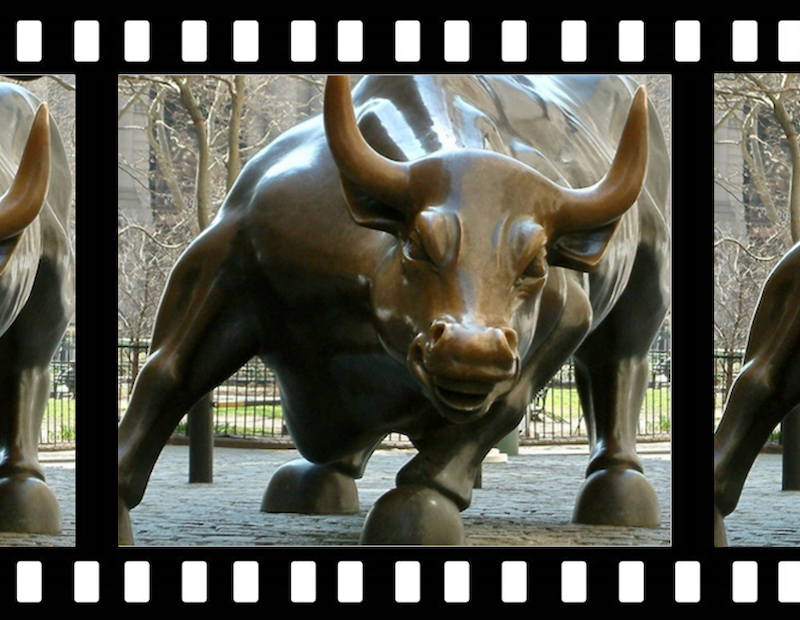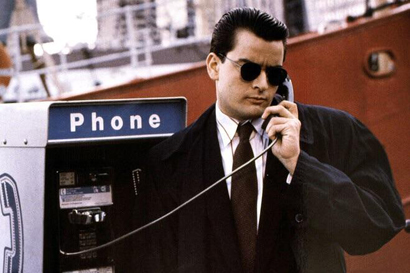
Wall Street is always a forward indicator — its job is to anticipate — and the cinema recovery gets a thumbs up from stock analysts. Giant brokerage Morgan Stanley issued an upbeat report on Cinemark Holdings, which is the third ranked U.S. movie-theater chain, and that optimism is broadly spreading that cinema will not only survive but thrive.
The praise is significant because it’s not from Hollywood creative talent enamored with the idea of their works splashed across the silver screens or elitist cinephiles waxing about some obtuse art films. The appraisal is from unsentimental Wall Streeters.

In a 28-page report, a trio of Morgan Stanley media analysts led by Benjamin Swinburne note that “Movie-going has also proven counter-cyclical as a form of inexpensive entertainment, insulating Cinemark from a slowing economy.” Cinemark’s stock jumped an eye-catching 11% on the day Morgan Stanley praised the stock, and the rest of cinema stocks basked in the same glow.
The investor optimism stems from boffo performance of the blockbusters class of films led by Paramount Pictures’ “Top Gun: Maverick” ($622 million in domestic boxoffice), Walt Disney Studios’ “Doctor Strange in the Multiverse of Madness” ($411 million in domestic BO) and Warner Bros.’ “The Batman” ($369 million domestically).
These and other heralded big-budget, glossy films delivered in their cinema runs. Those “domestic” figures are the U.S./Canada; the same films earn additional monies overseas.
Among the major studios, Warner Bros. and Universal Pictures shortened windows last year for their theatricals to streaming to bolster their HBO Max and Peacock subscription video-on-demand (S-VOD) services. But this year the majors reverted to a more cinema-friendly release patterns with wider spacing between theatrical and S-VOD release. Further, Morgan Stanley speculates that streamers such as Netflix will embrace early cinema runs for their biggest original films, attracted by the publicity glow.
It’s a solid base when top-end big-budget films perform so well at cinemas, but there are weak spots too in comeback story.
* It’s not clear the medium and small films will thrive at cinema. Mid-budget crime actioner “Ambulance” from Universal Pictures was a surprising disappointment. (Indie distributor A24, however, has an unheralded hit with “Everything Everywhere All at Once” at $67 million in domestic BO.)

* The disruptions from the Covid pandemic results in Hollywood’s theatrical release schedule being light for the months ahead. “Key to continued recovery, in our view, is film supply,” writes Morgan Stanley. “We expect the number of widely released films in ’22 to be only 50% of ’19, and our base-case thesis requires more films to be widely released in ’23. We are confident that studios are bringing more, not fewer, titles to theaters as they recalibrate their streaming ambitions.”
* The giant AMC theater chain is still on health alert with heavy debt, despite its stock being bid up by unsophisticated meme investors.
On AMC, which is the largest U.S. circuit at nearly 600 theaters with 8,043 screens, investor website Motley Fool presents a post by Parkev Tatevosian saying: “Time is working against the movie theater chain. It has $5.5 billion of high-interest debt on its balance sheet, which has cost the company $82 million in interest expenses in its first quarter of 2022. If AMC does not get things rolling quickly, it will have difficulty paying back the principal on those debt agreements…AMC’s stock is still too expensive following its surge from the meme-stock frenzy.”
AMC stock is also riding high in the current wave of optimism. Though has pointed out earlier, Hollywood film distributors take a larger percentage of ticket-sale revenue (known as “film rentals”) for outsized blockbusters, which cuts into the economic upside for theaters.
While the industry rides high right now, the rest of this year and into early 2023 will likely be soft because of the aforementioned depleted supply of theatrical films, though that’s a one-time disruption from the pandemic. Analysts expect the flow to improve thereafter, including from video streamers expanding theatrical runs of their original films.
In 2019, the most recent full year unaffected by the pandemic, domestic boxoffice was $11.3 billion, which is a benchmark for full recovery. “We estimate the N. American box office can grow to 85% of its 2019 levels in 2023,” writes Morgan Stanley. Given some theater closures and the disrupted theatrical movie flow from Hollywood during the pandemic, achieving 85% would be a full recovery.
Related content:
Leave a Reply